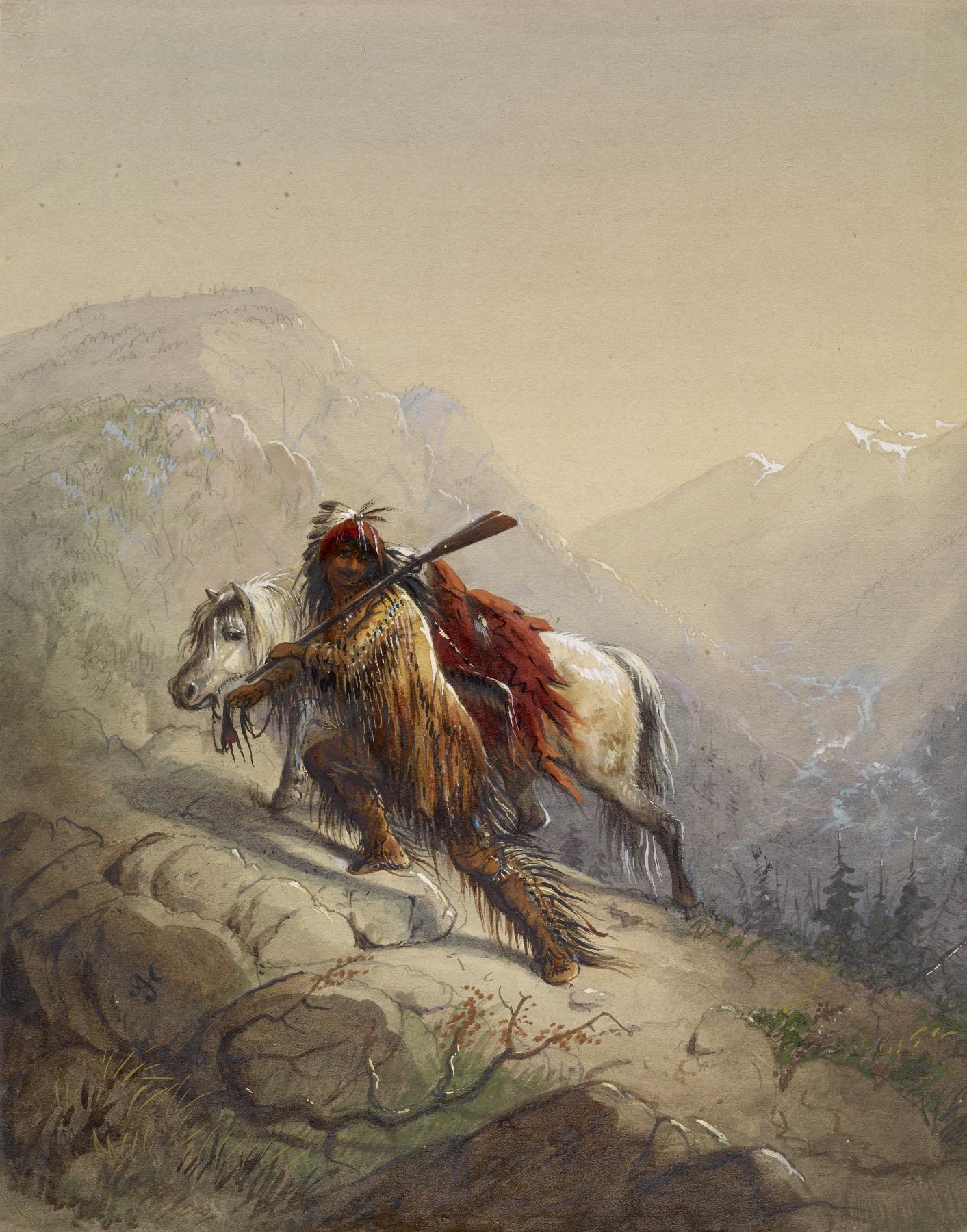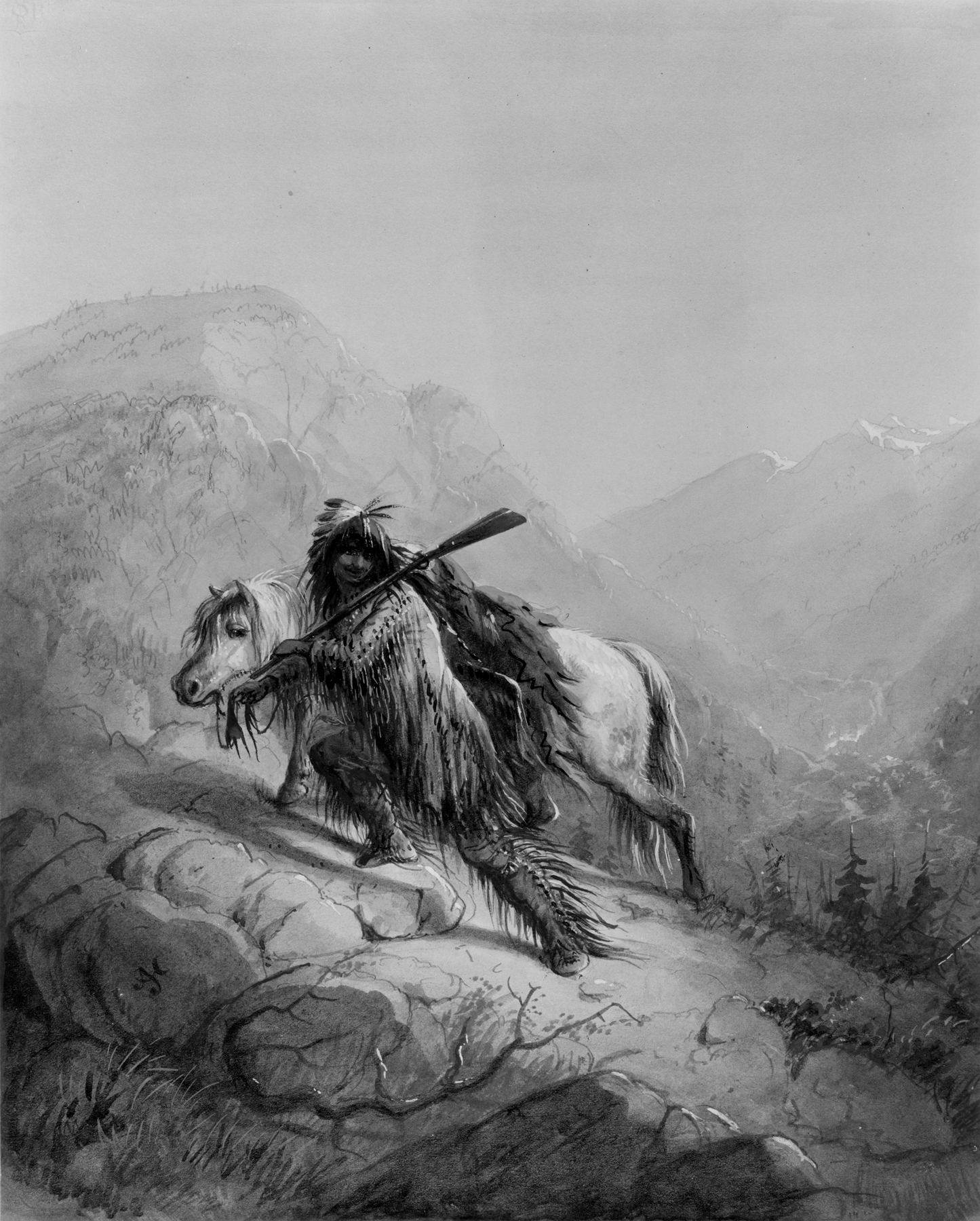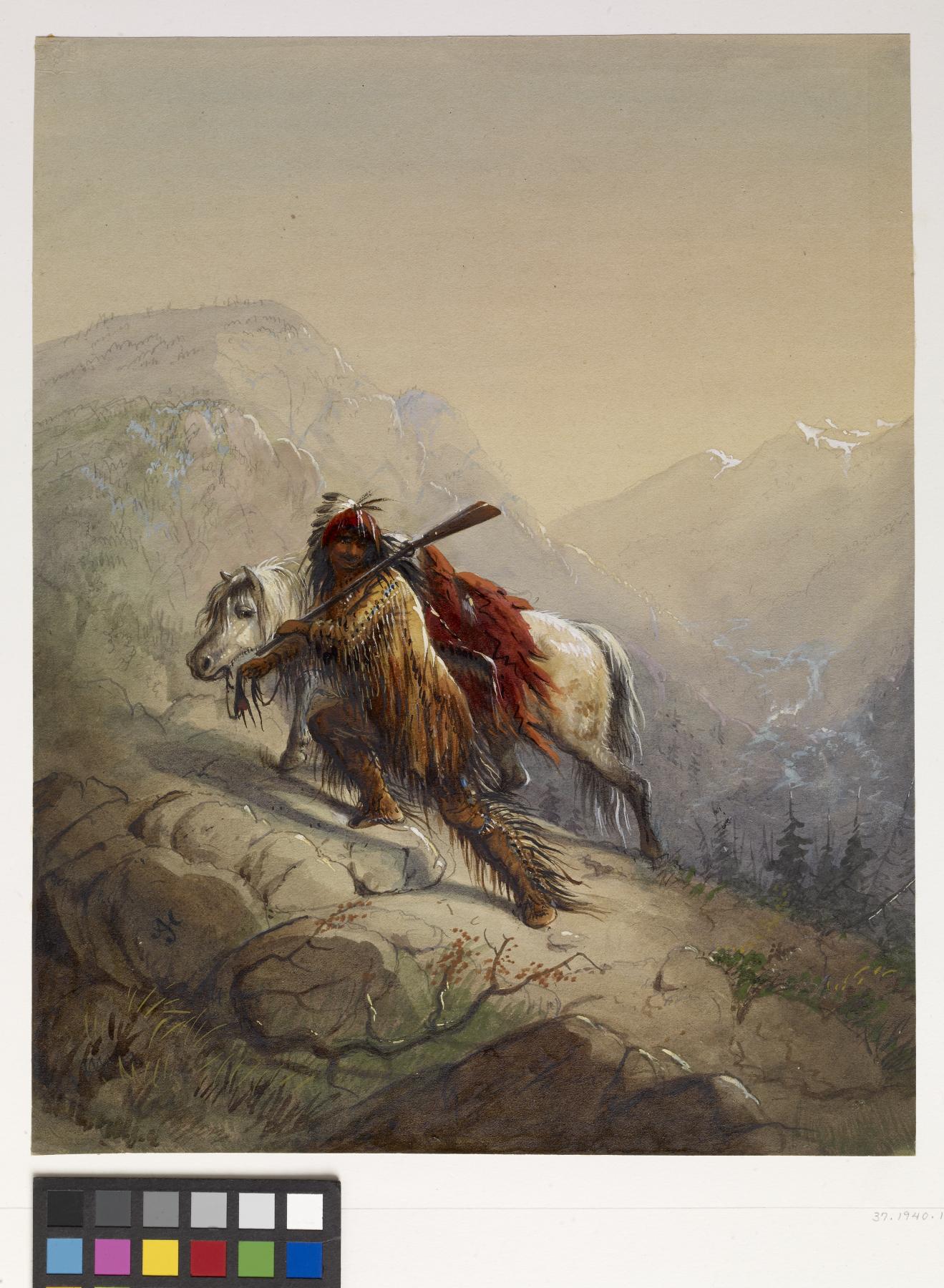The Scalp-Lock
(18th and 19th Centuries )
Extracts from Alfred Jacob Miller’s original text, which accompanied his images of Native Americans, are included below for reference. These words, which shaped how Miller’s contemporaries viewed the watercolors, reveal the racism and sexism embedded in 19th-century exploration and colonization of the western part of what is today the United States.
"To a people who delight in war, and who are instructed from youth in its principles, and practice, it is almost useless to preach the blessings of peace. If you atempt to explain the benefits that may accrue to them from the observance of the later, they ahve a ready answer: 'If we make jeace how shall we employ our young men?' They point out to you their scalps and arms, and as- 'Shall we throw these away, and become women?' If a relative or member of their tribe is killed, they will listen to neither palliation or justification, but pursue relentlessly any member of their offender's company, to have their revenge. This perhaps forms one of their worst traits, and cannot be defended, yet it is characteristic of the whole of them. In the sketch, and Indian has secured the scalp-lock of his enemy, and is making good his escape,- for this honor awaits him in his camp, and it often presents a strong claim for the post of a chief or brave." A.J. Miller, extracted from "The West of Alfred Jacob Miller" (1837).
In July 1858 William T. Walters commissioned 200 watercolors at twelve dollars apiece from Baltimore born artist Alfred Jacob Miller. These paintings were each accompanied by a descriptive text, and were delivered in installments over the next twenty-one months and ultimately were bound in three albums. Transcriptions of field-sketches drawn during the 1837 expedition that Miller had undertaken to the annual fur-trader's rendezvous in the Green River Valley (in what is now western Wyoming), these watercolors are a unique record of the closing years of the western fur trade.
Provenance
Provenance (from the French provenir, 'to come from/forth') is the chronology of the ownership, custody, or location of a historical object. Learn more about provenance at the Walters.
William T. Walters, Baltimore, 1858-1860, by commission; Henry Walters, Baltimore, 1894, by inheritance; Walters Art Museum, 1931, by bequest.
Exhibitions
| 1971 | Alfred Jacob Miller. The Walters Art Gallery, Baltimore. |
Geographies
USA (Place of Origin)
Measurements
11 3/4 x 9 1/4 in. (29.9 x 23.5 cm)
Credit Line
Commissioned by William T. Walters, 1858-1860
Location in Museum
Not on view
Accession Number
In libraries, galleries, museums, and archives, an accession number is a unique identifier assigned to each object in the collection.
In libraries, galleries, museums, and archives, an accession number is a unique identifier assigned to each object in the collection.
37.1940.192







